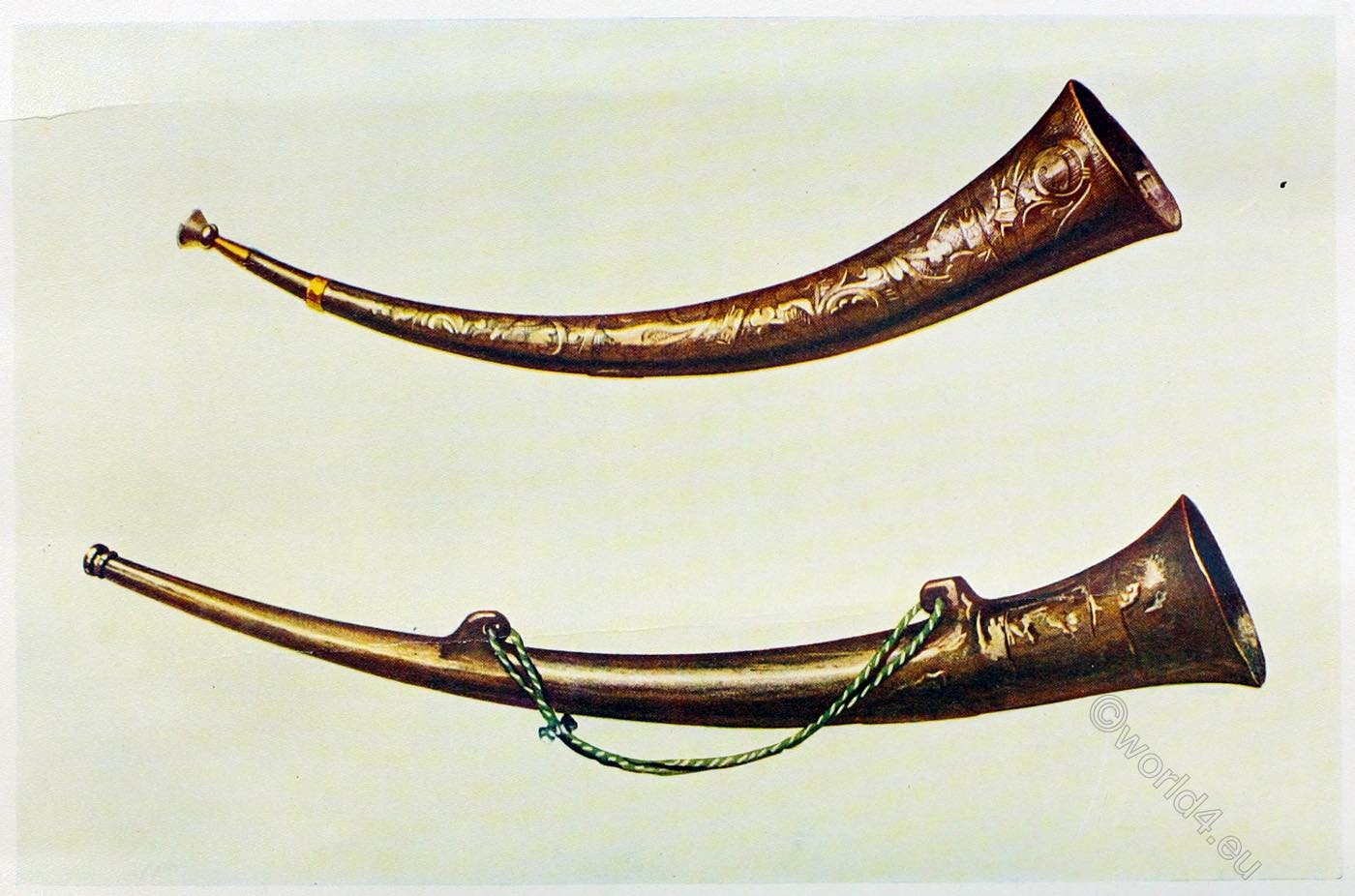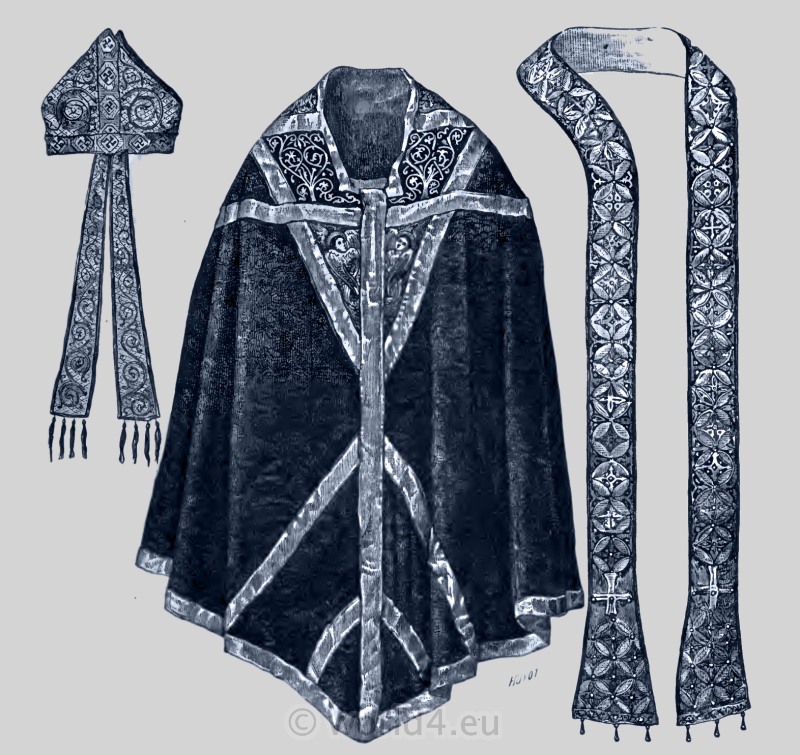BURGMOTE HORNS.

BEAUTIFUL horns of hammered and embossed bronze belonging to the Corporations of Canterbury and Dover. The right-hand one is from Dover, where it was formerly used for the calling together of the Corporation at the order of the mayor. The minutes of the town proceedings were constantly headed “At a common Horn blowing” (comyne Horne Blowying). This practice continued until the year 1670, and is not yet entirely done away with, as it is still blown on the occasion of certain Municipal ceremonies. The motto on this horn is:
JOHANNES DE • ALLEMAINE • ME • FECIT •
preceded by the talismanic letters A•G•L•A, which stand for the Hebrew and mean, “Thou art mighty for ever, O Lord!”
The horn, which is 31¾ inches long, with a circumference at the larger end of 15½ inches, is of brass, and is deeply chased with a spiral scrollwork of foliage chiefly on a hatched ground. The inscription is on a band that starts four inches from the mouth and continues spirally. The maker’s name is now nearly effaced, but the inscription shows that he was a German, and the date is assigned to the thirteenth century. A paper in the Antiquary (vol. I. pp. 253-55), written by the late Llewellyn Jewitt, F.S.A., of which some use has here been made, states that there are on the obverse of the oldest Seal of Dover, said to have been made in 1305, two horn-blowers in the stern of a ship, each blowing a horn similar to this example.
The left-hand Burgmote Horn belongs to the Corporation of Canterbury, and records of its use for calling meetings of the Corporation are extant from 1376, down to the year 1835. The chord measurement of the arc of this Horn is 36 inches.
The antiquity of horns, whether natural or of metal, as instru- ments for sounding is well known. Their employment in some religious services points to customs that were already old when the oldest historical monuments we possess were raised. The Hebrew formulary upon the Dover horn reminds us of the Jewish Shophar, referred to particularly in the Introduction (page xii)—a ram’s horn, usually straightened and flattened, which is not only the solitary ancient musical instrument actually preserved in the Mosaic ritual, but is the oldest wind instrument known to be retained in present use in the world. It is still sounded by Jews on the New Year and on the Fast of the Day of Atonement.
In England, horns have been used amongst the various methods of transferring inheritances. They were adopted for instruments of conveyance either in Frank Almoigne, in Fee, or in Serjeantry, and from this cause have been often preserved.
Source: Musical instruments, historic, rare and unique; by Alfred James Hipkins and William ill Gibb. London: A. and C. Black, ltd. 1921.



